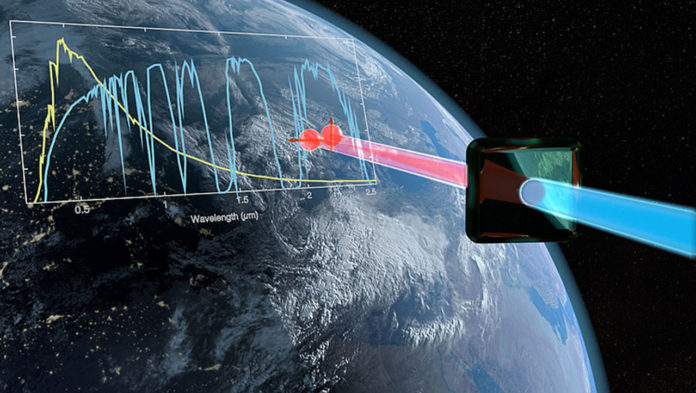Quantum-enhanced optical systems operating within the 2- to 2.5-μm spectral region have the potential to revolutionize emerging applications in communications, sensing, and metrology. To date, sources of entangled photons have been realized mainly in the near-infrared 700- to a 1550-nm spectral window.
Notwithstanding, these shorter wavelengths have their cons, particularly in satellite-based correspondence. They are disturbed by absorbing gases in the atmosphere as well as the background radiation of the sun.
A new study by Prof. Dr. Michael Kues from the Cluster of Excellence PhoenixD at Leibniz University Hannover has come up with a technology that generates quantum-entangled photons in a spectral range of light that was previously inaccessible. It can potentially make the encryption of satellite-based communications much more secure in the future.
With existing technology, end-to-end encryption of transmitted data can only be guaranteed at night, but not on sunny and cloudy days.
A 15-member research team from the U.K., Germany, and Japan has developed a new method for generating and detecting quantum-entangled photons at a wavelength of 2.1 micrometers.
Prof. Dr. Michael Kues from the Cluster of Excellence PhoenixD at Leibniz University Hannover said, “The photon pairs entangled at the 2-micrometer wavelength would be significantly less influenced by the solar background radiation. Also, so-called transmission windows exist in the Earth’s atmosphere, especially for wavelengths of two micrometers, during which the photons are less absorbed by the atmospheric gases, in turn allowing more effective communication.”
During the experiment, scientists used a nonlinear crystal made of lithium niobate. They sent ultrashort light pulses from a laser into the crystal, and a nonlinear interaction produced the entangled photon pairs with a new wavelength of 2.1 micrometers.
Kues said, “The next crucial step will be to miniaturize this system by converting it into photonic integrated devices, making it suitable for mass production and the use in other application scenarios.”
Journal Reference:
- Two-photon quantum interference and entanglement at 2.1 μm. DOI: 10.1126/sciadv.aay5195
